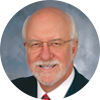In a previous column [June 17 issue], I introduced the concept of building bridges to advance chiropractic cultural authority in your community.
Step 1: Know the Gatekeepers
Recent articles in the chiropractic press have reported on our educational institutions getting involved in local public health initiatives in their communities. This is a fine example of our schools knowing the gatekeepers in their area and working alongside them to support an aspect of their mission that chiropractic can support. It provides healthy public awareness of the school within the community, in addition to placing students and administrators shoulder to shoulder with local health-care cultural authorities. It sends a message that chiropractic is concerned with the greater health of the community, not just chiropractic "things."
So, who are the gatekeepers in your community? Here are a few examples:
- The local public health office
- The board members of your community hospital
- Teaching clinicians at a nearby nursing or medical school
- The practice members of a nearby pain clinic
How open are they to working with you? It could run the gamut from absolute rejection to indifference to excitement. The good news is that it will not be uniformly negative or positive. You might have to shake a few hands, but you are going to need someone who is willing to listen, especially if you express an interest in their concerns.
Step 2: Speak Their Language
For various reasons, our medical counterparts operate with far more oversight and scrutiny of their public communications. Chiropractic, on the other hand, has quite a history of claiming to cure the incurable, and has been quite public about using "fringe" diagnostics in assessing patient health. Those with cultural health care authority in your community cannot risk their reputation on a professional who is going to overstep boundaries and create hype that will become an embarrassment to their reputation. Hype only damages our credibility. We need to know how to persuasively defend what we can verify about chiropractic, but be humble enough to admit we do not have the whole story researched yet.
Step 3: Come Prepared
What is the difference between a randomized, controlled trial and a case study? What is evidence-based care? What kinds of conditions has chiropractic been shown to validly help, and what conditions are still considered experimental? What typical chiropractic assessments have been shown to be reliable between examiners? What are the iatrogenic risks associated with manual cervical manipulation? What are the models of subluxation and the theoretical effects of manipulation? These are all questions you should answer if you are going to expand chiropractic authority in your community.
While credentials can definitely open doors, coming prepared to multidiscipline interactions makes a more persuasive impression. Not knowing the basics behind what makes you and your techniques reliable, and the evidence behind their effectiveness, can be damaging; you are not going to be able to communicate as a health care peer. This is something that you need to be able to accomplish with confidence.
Fortunately, over the past 30 years, a growing body of chiropractic research has allowed us to refine our knowledge and build a base that is accessible to all chiropractic professionals. One first step would be to start reading the peer-reviewed journals, either medical, osteopathic or chiropractic, on which chiropractors sit as peer reviewers. Start building a reference shelf of articles that will support your assertions when you talk to gatekeepers, focusing particularly on assertions that might reflect the concerns of the community authority you wish to engage. The more you know, the more easily the bridge will be built.
The Power of You
Our profession will continue to lobby Washington and expand our research initiatives in the coming years. These are efforts that need your support. Over time, they will lead to an increased chiropractic cultural authority as we build and reform our knowledge. These aspects of the profession do not move as quickly and are not as powerful in your community as you are, however. What you do to build bridges within your community is going to do far more for chiropractic authority in your community than legislation or clinical research.
While other DCs in your community might look to someone else to expand their cultural authority, you can be the solution, bridge by bridge, in moving chiropractic from the realm of belief to a status as accepted cultural practice in your neighborhood and beyond.
Click here for previous articles by Arlan Fuhr, DC.





